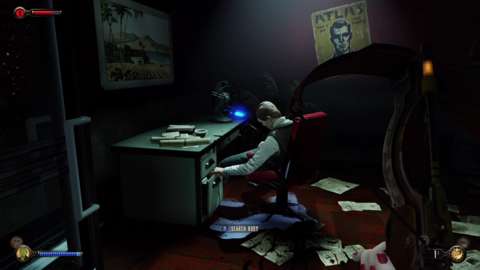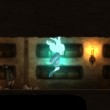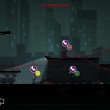[Other Take] BioShock infinite: Burial at Sea – Episode 2 Review
In life, we make connections with others. We protect the ones we love as they protect us, creating ties that bind us for life. We can't forcibly create those bonds, and once created, they are not easily broken.
Burial at Sea - Episode 2 is about those kinds of personal connections. Like the disappointing first episode, this concluding chapter ties the Columbia of BioShock Infinite to the Rapture of BioShock and BioShock 2--yet it begins in neither city. Instead, you are in Paris, though it is not a Paris that ever was, but rather a Paris so perfect, so ideal, that even the most imaginative daydreamers could not have thought up a place of such sunny beauty. And no longer are you Infinite protagonist Booker DeWitt, but instead his talented ward Elizabeth, who had long dreamed of visiting La Ville-Lumière. Your initial stroll along the city's sublime terraces takes you past smiling couples and friendly onlookers, many of whom know you by name. This glorious opening recalls your initial stroll in Columbia, but when a sweet songbird lands on your finger and chirps along with the ambient music, it becomes clear that this utopia is too impeccable to be real. This is Paris by way of Disney, a place where Elizabeth's resemblance to Beauty and the Beast's heroine Belle is rendered even sharper by the numerous calls of "Bonjour!" from her many admirers.
Dreams never last. Elizabeth awakens from her reverie in Frank Fontaine's sunken department store with a gun pointed at her head and a game of Russian roulette under way. She is at the mercy of Frank Fontaine, aka Atlas, whose massive department store has sunk far below Rapture. Booker is there too, or at least an apparition of him, helping Elizabeth respond properly to Fontaine's interrogation so that she might stay alive and follow through on her promise to protect the little girl known as Sally. Where Episode 1 relegated Rapture's well-known citizens to a series of cameos, Fontaine has a major role to play in Elizabeth's adventure. He's a menacing presence, inherently untrustworthy, and a late-game scene in which he demonstrates his chilly inhumanity is so wildly disturbing and effective that for a moment, I was Elizabeth. I shared her dread, her contempt, and her resignation.
Some of Episode 2's attempts to create narrative and metaphorical relationships between Columbia and Rapture are too obvious, as if the game is leaping around shouting "look at me" (I knew what ammo to toss you because I read a lot about guns!), and tricky timey-wimey issues are glossed over with familiar fictional platitudes (I know this won't happen because it didn't!). Overall, however, Episode 2 leaves behind the first episode's uncomfortable meshing of incompatible game mechanics, and creates a coherence between narrative and action that even BioShock Infinite's main campaign never fully established. Elizabeth is not a natural murderer, and Burial at Sea, Episode 2 doesn't force you to play her as one.
That isn't to say that you don't have guns to shoot if you want to use them, though Elizabeth is so vulnerable that she can't participate in the straightforward shootouts that characterized BioShock Infinite. Instead, the episode prioritizes sneaking and subterfuge, equipping you with a miniature crossbow that shoots tranquilizing projectiles and darts tipped with knockout gas, and gifting you with a plasmid that allows you to become temporarily invisible and to see through walls. The result of this shift in approach is that big daddies are more ominous than ever. You cannot destroy them, only avoid or distract them. That hollow, soul-crushing groan that warns of a big daddy's presence caused my heart to sink into my stomach multiple times, knowing that I could never go toe-to-toe with the monstrosity that emitted it. Splicers, too, provide a fresh fear factor, given that you cannot damage them with a melee attack if they are aware of your presence; you can only momentarily stun them that way.
![[Other Take] BioShock infinite: Burial at Sea - Episode 2 Review](https://gamenetwork.eu/files/2014/04/2488856-0003.jpg)
And thus Episode 2 rocks to a different rhythm than Infinite's previous adventures. The pace is methodical but not slothful, and while the sneaking isn't a crushing challenge, it requires some forethought. Occasionally, I would slink up to a splicer from behind and knock him out with a swift melee blow. Other times, I would take aim at a fiend from a balcony above and fire a tranquilizer dart into his neck. Every so often, I set icy traps using the winter blast plasmid, and then tricked splicers into crossing them by firing noisemakers in their general direction. And when I was cornered, a blast from a shotgun could cure my ills, though this was typically a last-resort option. I sought every nook and cranny, gathering lockpicks and performing a simple but enjoyable minigame to access locked areas or neuter pesky turrets. What a pleasure to explore Rapture not as a gun-toting maniac, but as a survivor seeking answers.
And yes, Elizabeth is a survivor here, incapable of opening tears and observing the endless versions of power-hungry men and the lighthouses that lead to them. You discover the circumstances that led to her loss of omniscience as you follow the game's natural trail, and the episode does a creditable job of giving narrative context to its own mechanics. Elizabeth's vulnerability in combat is echoed in her emotional vulnerability; she is merely human now, reliant mainly on her wits and her intelligence, and at the mercy of the sociopaths she must manipulate.
![[Other Take] BioShock infinite: Burial at Sea - Episode 2 Review](https://gamenetwork.eu/files/2014/04/2488858-0004-510x352.jpg)
BioShock Infinite's conclusion left my mouth agape, but its narrative puzzles weren't impenetrable. Burial at Sea's finale, however, isn't so up front about its meaning. And so I have begun another playthrough, seeking clarity while muddling through on a difficulty setting that allows me access only to nonlethal weapons. My glee in doing so says a lot about the new episode's quality, especially in relation to the opening episode. Some strained metaphors and connections aside, the cities of Rapture and Columbia make for strange but comfortable bedfellows in BioShock Infinite: Burial at Sea - Episode 2. More importantly, Elizabeth's journey is tense and rewarding on its own terms, and is one that makes Rapture as mysterious as it was the first time you ventured inside.
In spite of its post-release backlash, Kevin VanOrd still loves BioShock Infinite, even though he was gravely disappointed by Burial at Sea's first episode. He's on his second playthrough of the new episode, which took him about three and a half hours the first time through.








